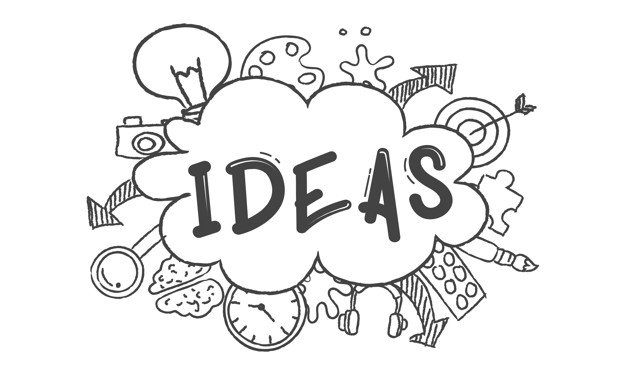Business Model Canvas: Find Your Organizational Identity with BMC Guide

You have probably heard of the Business Model Canvas. This canvas comes from the worldwide bestseller Business Model Generation and is used to develop, research, or change new and existing business models. The book and canvas have been around for several years, but the method is still current and very effective.
Although the Business Model Canvas has been developed to innovate the entire business model (from revenues to costs, core activities, and so on), it can also be used to investigate your organisation’s identity. But how does that work? I want to tell you more about this in this article. (Source)
The Canvas in Practice
As the managing partner of a successful design and communication agency in Utrecht, I have been a fan of the canvas for years. It has even become a regular part of our exploration phase, which always precedes the design process. I use the canvas to research a company’s DNA and get the customer’s creative briefing on paper. The canvas does not always have to be used to focus on the more efficient organisation of business operations, such as income and expenditure.
The need for a tool arose from the Post’s brainstorming challenge of getting a client’s creative briefing properly on paper. But I also wanted to research our own company myself. Moreover, every organisation is different, and so is the desired (design) process. The Business Model Canvas is the perfect starting point to make the decision makers’ ideas and expectations concrete. And you can also apply this to your organisation.
What is the Business Model Canvas?
The Business Model Canvas (also referred to as the canvas or BMC) is a handy business tool to map your organisation’s core in a visual and structured way. You can use the canvas to research the current business model and evaluate whether you are satisfied with it. But you can also use the canvas to explore future scenarios or ambitions, or zoom in on a specific part of your company, for example, a particular product.
In the Business Model Canvas, you can examine all critical aspects of your company: the value proposition, POC examples, the target group, and the relationship to the infrastructure, income, and expenditure. Moreover, you deal with essential questions about your company: your company’s core values, or who your customers? And who are the partners of your organisation?
Get the gist
You answer all these questions on one canvas, making the connections between these parts clear and transparent. If the business model is correct, then this canvas is enough to capture the essence!
Also Read: Benefits Of Online Marketing
How do You Fill in a Business Model Canvas?
Is there a need for growth or a different course within your organisation? Then, quick solutions are quickly sought. Everyone is busy with assignments and customers. As a result, you quickly pass researching the underlying need of the issue or the desired goal.
But taking that step back is very important. First, ask yourself: why is there a need for a new website or brochure? And who do we want to reach with this? With the help of the BMC, you map out the (desired) essential elements, after which a well-founded plan of action can be drawn up.
The Brainstorming Session

Suppose you want to organise a Business Model Canvas brainstorming session yourself. In that case, I recommend that you involve different employees in the process and look for a location outside the company building. In this way, everyone is released from their daily environment.
When I guide an organisation during a brainstorming session, it usually occurs in our studio and with different people from the organisation (management, staff employees, customers, product managers, etc.). This creates a neutral place where both management and people on the work floor can speak freely about their ideas. This approach provides varied, fresh, and new perspectives.
Involve all participants actively in completing the canvas. A supervisor who leads the session is, therefore, essential. Find a neutral person who will be given this task. Preferably someone who has experience with the Business Model Canvas and is not internally involved.
A supervisor can create a common language so that the Business Model Canvas becomes clear and well-organised for all participants. From the canvas, it is much easier to find out where the actual needs of your organisation lie.
The Sequel
Sometimes, one brainstorming session is enough to get to the core of the need and get all employees in line. But do you notice that there are many things on the canvas, and it goes in all directions? Then a second session in which you evaluate the results of the first session and, if necessary, refine it further can be very valuable. Then everyone has had the time to let the ideas sink in.
The Brand Guide
If such a clear picture has already been obtained from the first session and there is a real need for deepening, I sometimes also switch to the Brand Guide. This is another canvas (based on the book Brand Design (aff.)) that I use to explore the corporate identity further.
In the Brand Guide, the brand’s identity is described, and the frameworks for the design are further elaborated. With the help of the Brand Guide, the interior of your organisation is explored in-depth, and the (desired) brand appearance is examined. The Merkwijzer thus lays the foundation for implementation.
In the following article, I will tell you more about working with the Brand Guide.
Also Read: Ways Your Marketing Strategy Must Evolve with IoT
The 9 Building Blocks Of The Business Model Canvas
The Business Model Canvas consists of nine building blocks. Each building block highlights a part of your organisation. The middle is the value proposition, and around it are the building blocks that make the business possible. You will find the customer segments, customer relationships, channels, and income streams on the right. On the left are the core activities, essential resources, cost structure, and critical partners.
Preparation
When filling in the canvas, it is good first to determine what you will focus on. Do you want to map the current proposition and the essence of your organisation and see where there are still possible opportunities? Or do you want to sketch the ‘ideal’ scenario and put into concrete words how the building blocks should be filled if you were to take a different course with the organisation?
Value Proposition
The value proposition is the beating heart of your organisation. In it, you describe the unique value of your company. This could be a combination of motivations, a problem being solved, or simply the reason why your company is chosen over your competitors.
In practice, I notice that the value proposition is often the most challenging part of completing, and you have to think carefully about it. It is the starting point of the canvas, but also the most essential part. All building blocks surround the value proposition and must fit in well with it.
Customer Segments, Customer Relationship & Revenue Streams
After the value proposition, you first fill in the right side of the canvas. That is the value side of your company with themes that concern customers, relationships, and channels.
Who are your customer segments, through which channels are these customers reached, what is the relationship with them, and what revenue streams do they generate? It is also good to also look at potential customer segments and channels here. Where are the opportunities for your organisation? Or are there other customer segments that you would like to serve?
Core Activities, Key Resources, Key Partners & Cost Structure
Finally, go to the left and name the practical matters of your organisation. Here, you answer questions such as: Which core activities do you perform, who are the key partners, which essential resources are needed, and what are the costs that your company incurs? Here too, it is advisable to think about where your opportunities lie in the future. Maybe there are potential key partners that you can work with.
Why do You Use the Business Model Canvas?
The Business Model Canvas can be used for various purposes and in many ways. As I described earlier, I find it a valuable research tool to map out a client’s creative briefing, align the client’s team, and coordinate expectations. But internally, it is also the perfect way to involve your team in the developments in the organisation.
If you use the canvas to investigate your organisation’s identity, the value side (right side) of the canvas is especially important. Here you go into the added value of your organisation, the target group, and the channels you already use.
One Step Back
It may feel a little bit awkward at first because you are probably mainly used to talking in means right away: we do this and so work for so and so. With the Business Model Canvas, you can take a step back and reflect on the soul of your company. Why did you start this firm? What does the company stand for? And what are our motives?
Once you have answered these questions, you will have a clear picture of your company’s DNA. That way, you can see whether your current image fits your identity and whether there is a need for change, for example, a new house style.
Also Read: Elements of Design – Understanding the Basics
Why is the Business Model Canvas Valuable?
If the Business Model Canvas is completed correctly, it will provide many insights. This can be affirmative as well as inspiring. It is excellent that we get all the questions from the exploration phase answered with the canvas. It is also a valuable tool for your organisation.
For example, you can fill in the canvas every six months to check whether your intentions have come true. You evaluate whether your objective has been achieved, and in this way, you remain alert to any changes. I find it a handy tool and acceptable method to gain internal insight and focus on essential matters.
